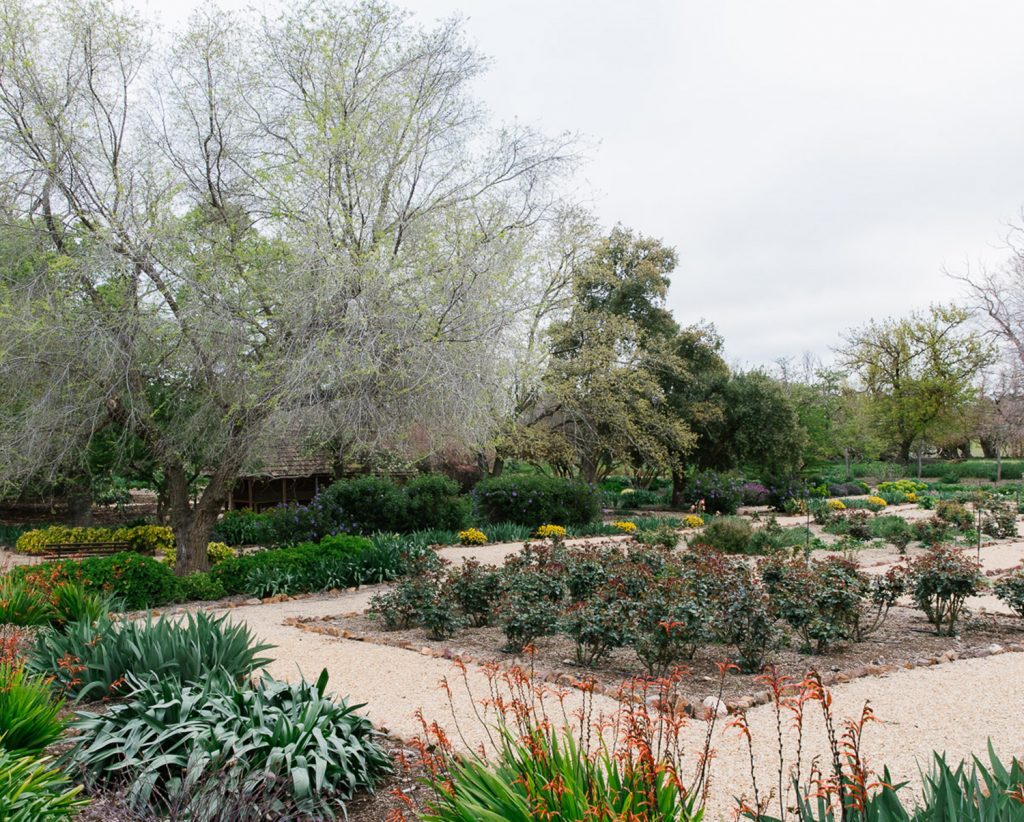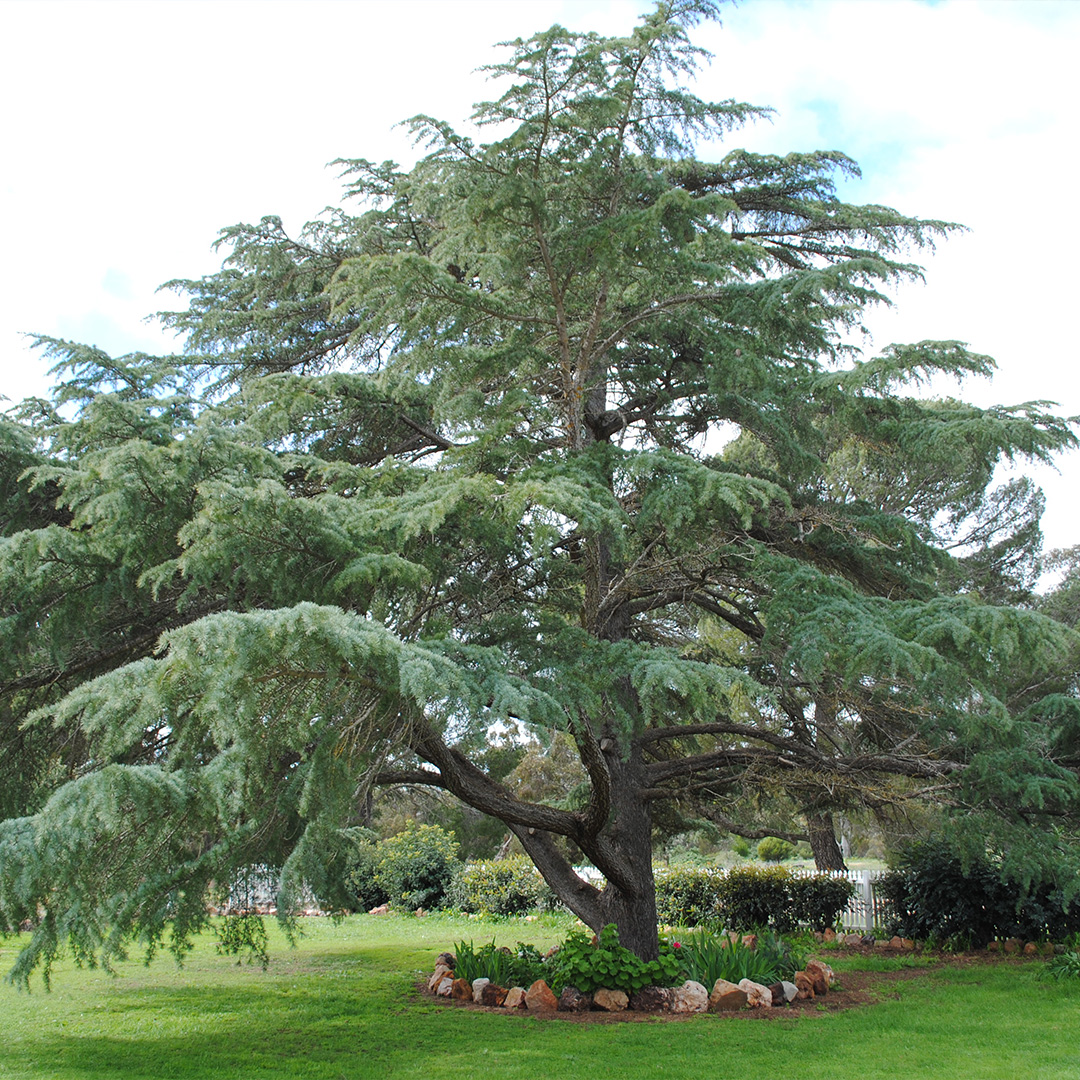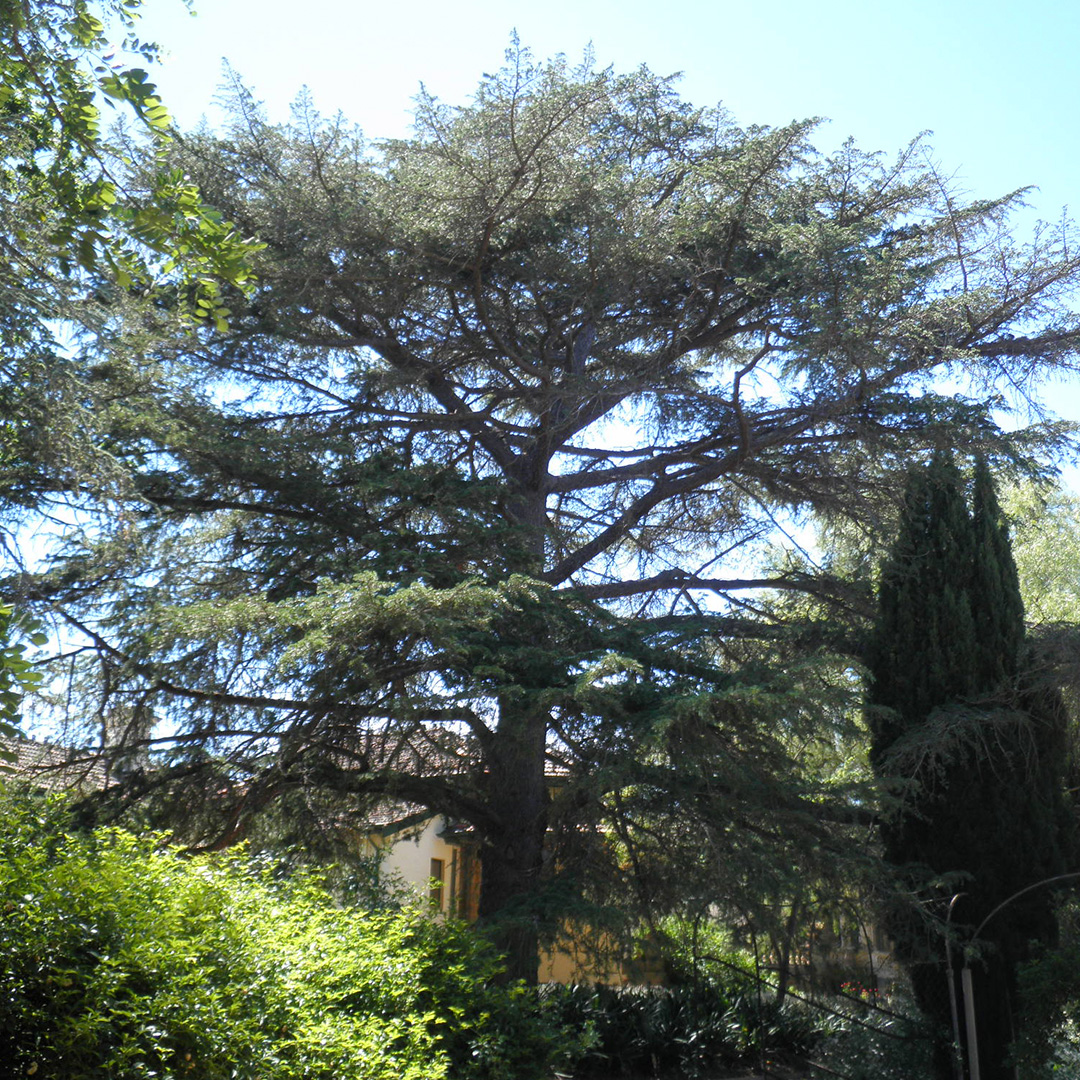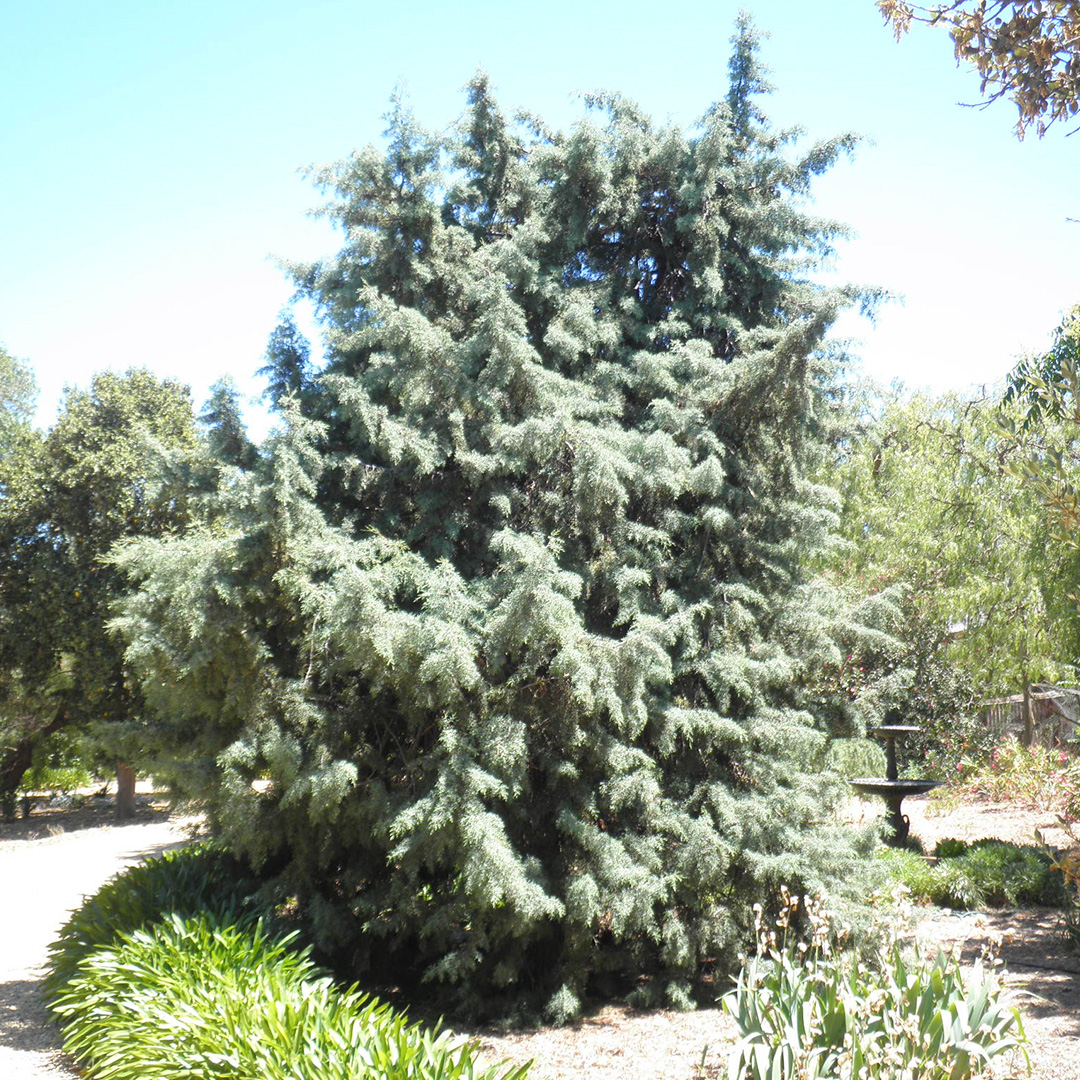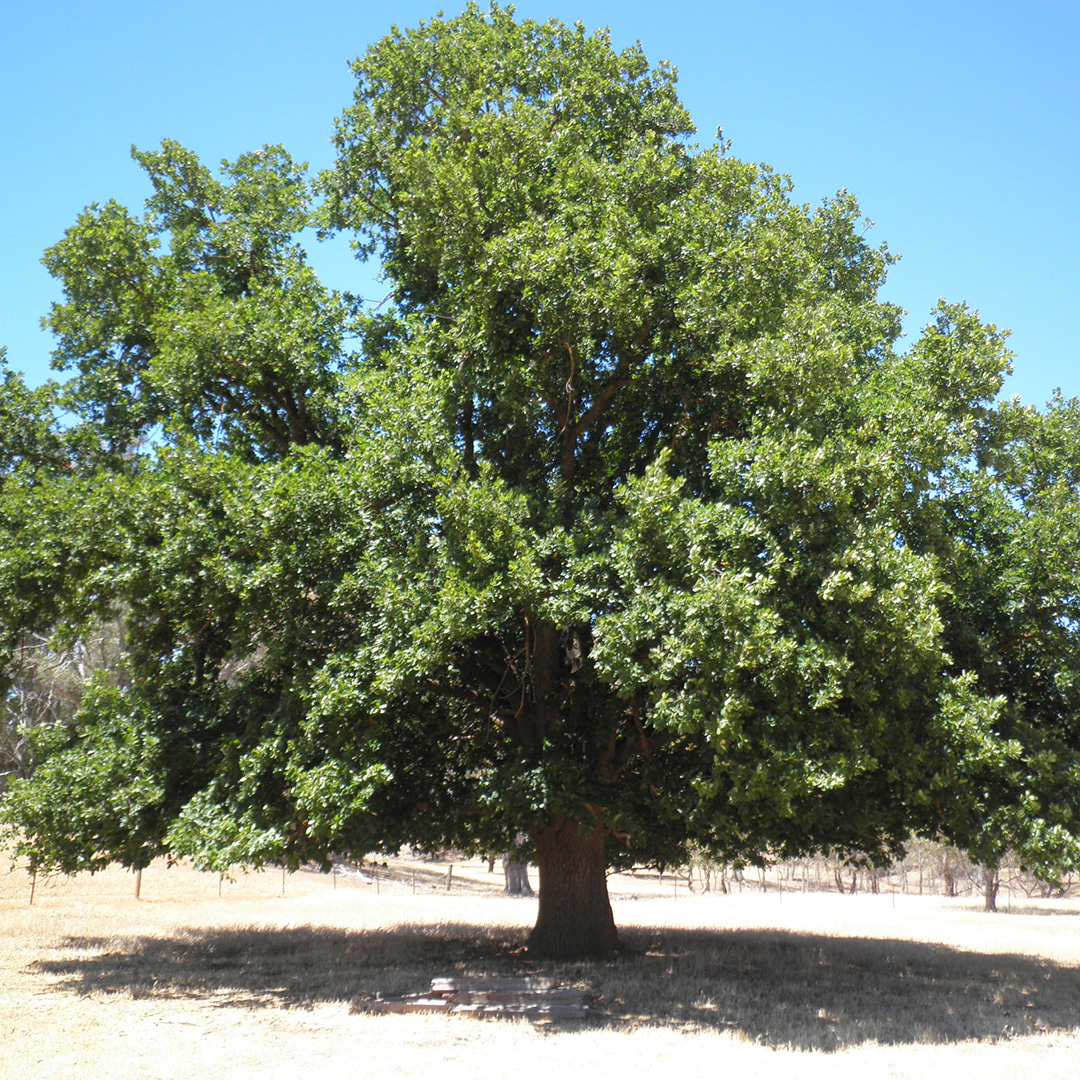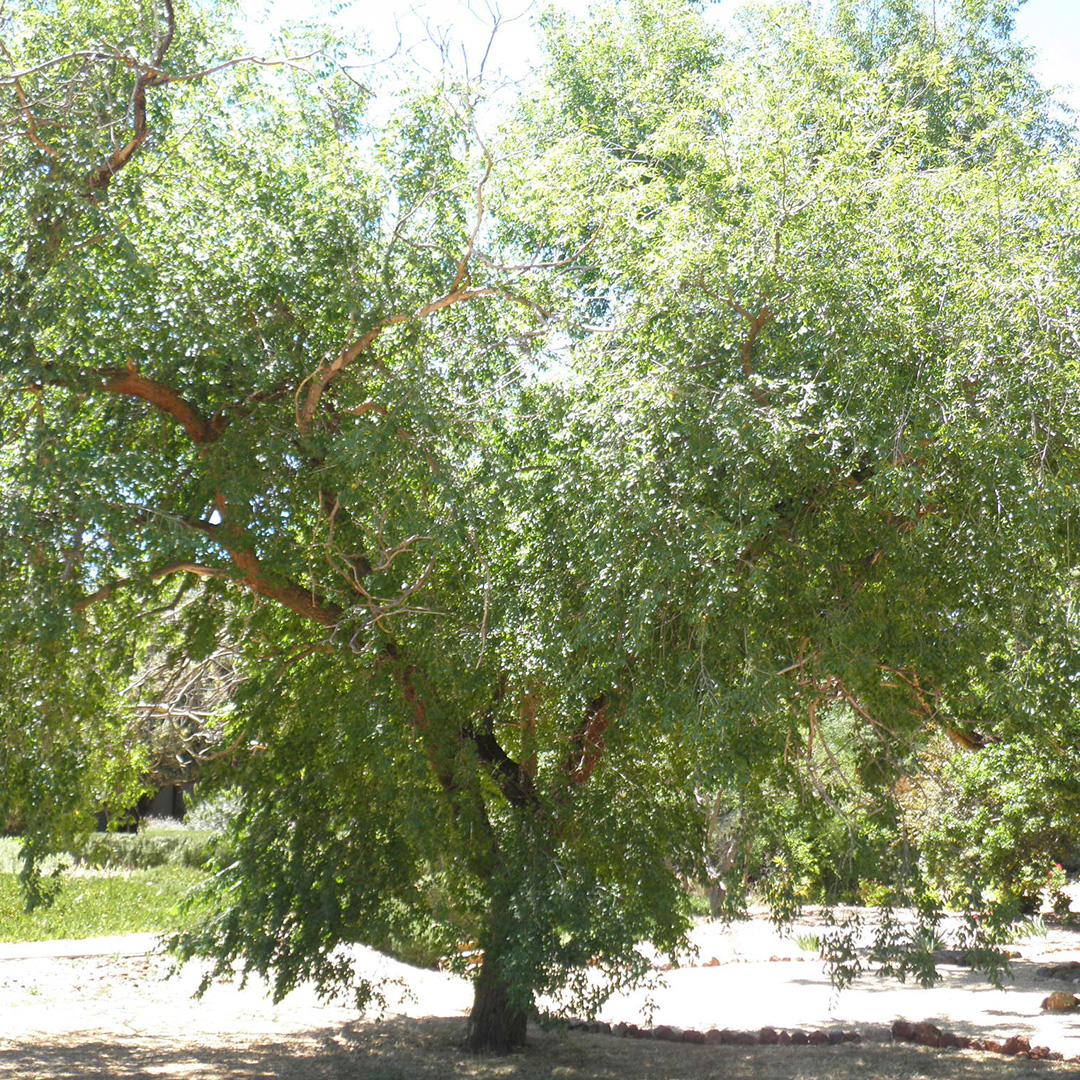Christine Reed in her book, Gardens on the Edge, (Murdoch Books 2018) describes the garden.
“The house and garden’s formal frontage seem to show a marked resemblance to the inspiring vision of English architect and landscape designer Harold Peto (1854-1933) who worked in the Arts and Crafts tradition, inspired by Italian Renaissance design. He disapproved of the English taste for plantings “running riot in masses of colour irrespective of form”.”
Created in the Victorian era, then extended and enhanced in the early 1900’s, the gardens have a strong Edwardian feel with wisteria covered arbors, a crabapple walk, rockery, formal rose gardens, fountains and lawns all laid out in terraces. There are many garden buildings including: shade houses, cucumber house, folly, apple house – and of course a mushroom house!
Sit in the shade of the majestic, hundred-year-old Chinese Elm on the upper fountain terrace in front of the main house – walk down the garden stairs to the lower terrace and the pergola supporting an avenue of Souvenir de la Malmaison roses. The pergola is flanked by Edwardian rose beds leading to the Apple House – a cool store built to resemble an Asian pagoda with, walls and roof of Marseilles terracotta tiles.
The gardens also include a restored rockery and succulent garden, cherry walk, cutting garden with the National Trust, heritage listed, Siberian Elm and magnificent Holm Oak and we can’t forget the picturesque ornamental lake and folly tower at the bottom of the garden.
The gardens are unique and extensive. Whether you join a guided tour or take the opportunity to wander at leisure when you book to stay in one of our cottages – or visit during the Open Garden weekend in October each year, there is always something to see and smell and enjoy.
